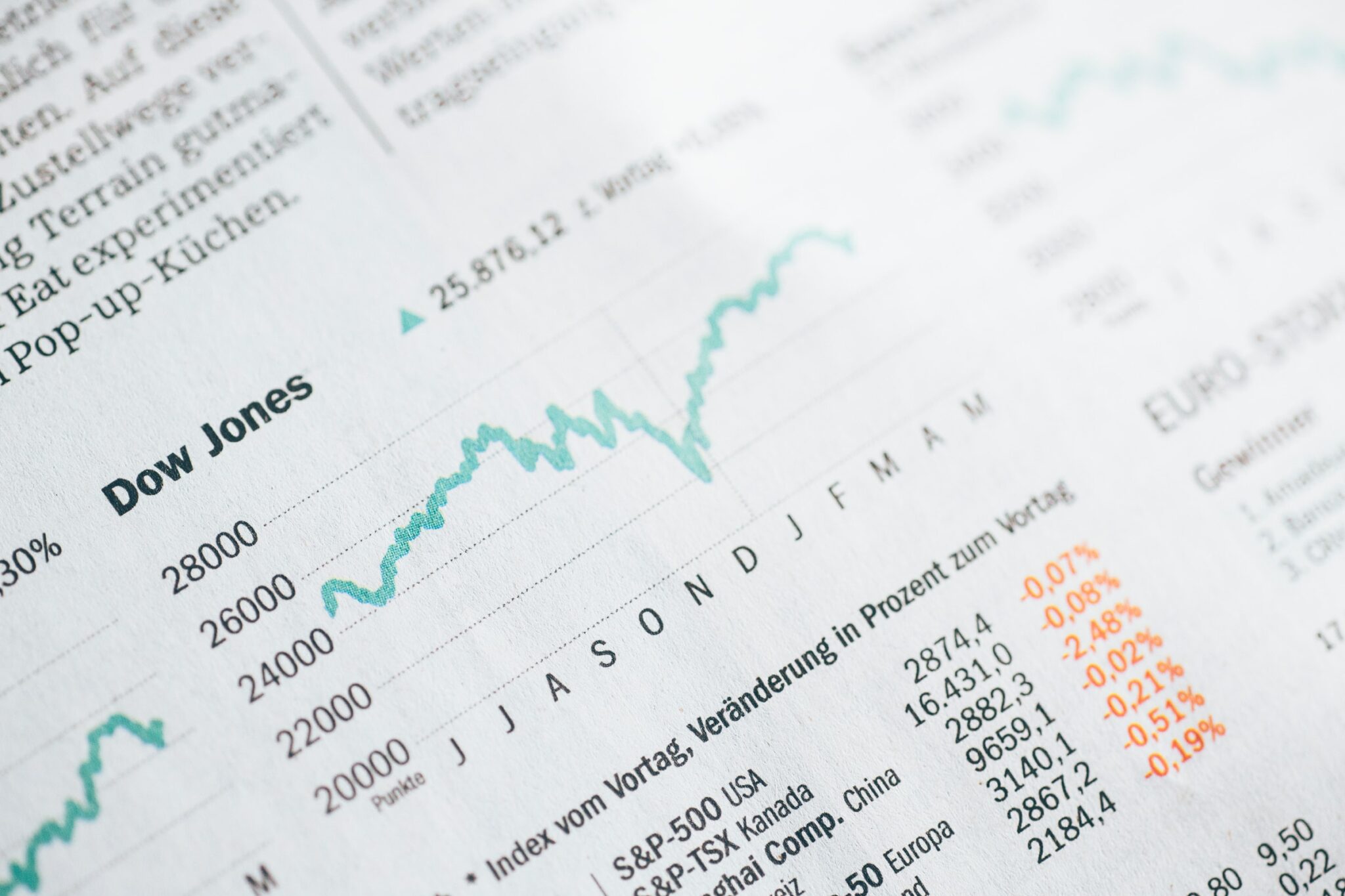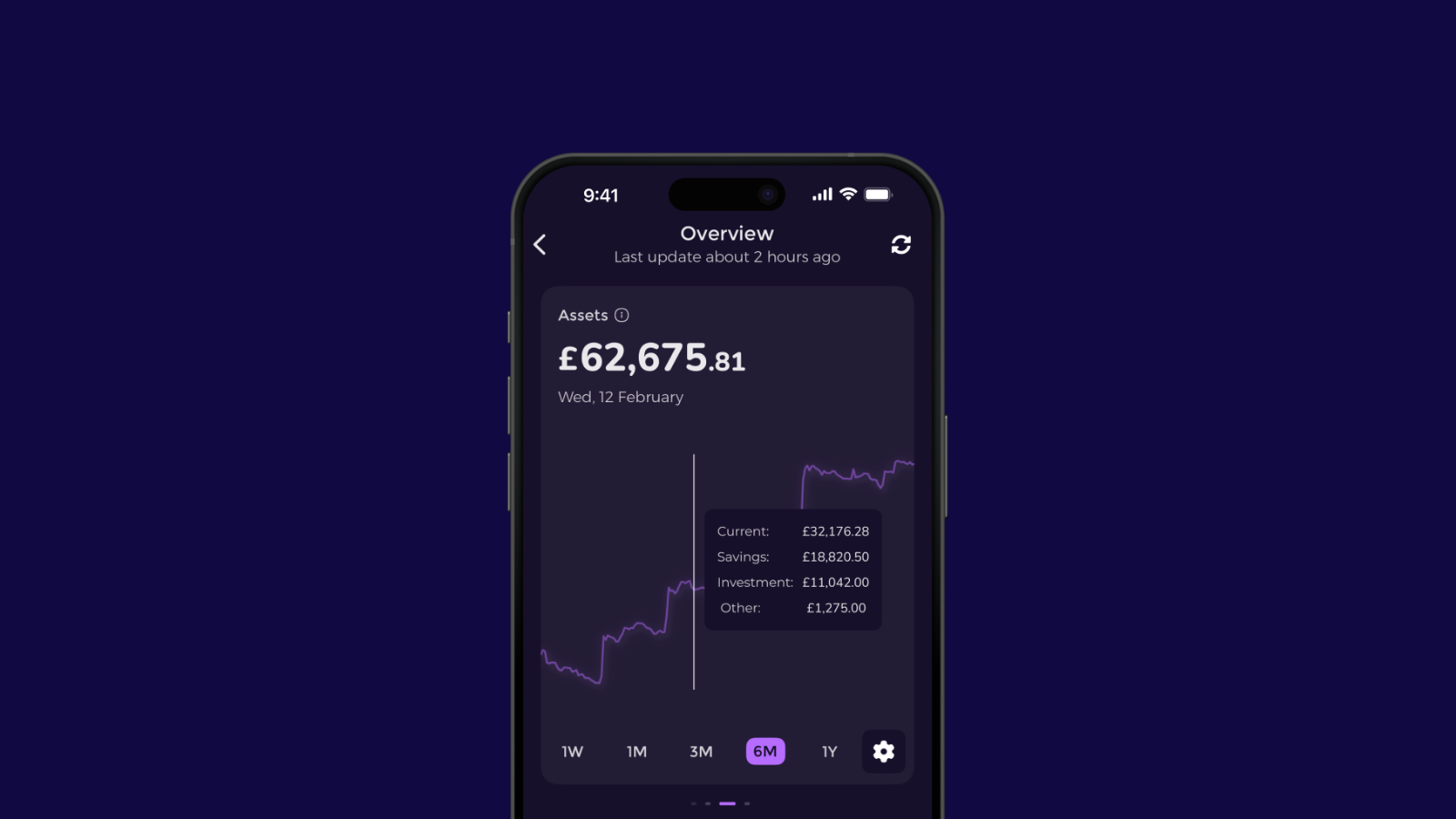FEATURED ARTICLE
The Ultimate Guide To Investing

Rebekah May
September 10, 2020 •8 min read
TABLE OF CONTENTS
What Is An Investment?
Types Of Investments
How Do I Invest?
Points To Consider Before Investing:
Summary
There are hundreds of different ways you can invest your money and build a portfolio to suit your needs. Here we’ve written about seven different types of investments to help guide you through your investment journey.
But before we start, let’s take a look at what actually is an investment.
What Is An Investment?
An investment is a decision you make to allocate your money with the hope that it will one day make you more money.
Unlike a bank account, where your money is safe and you earn a small amount of interest, investments come with big rewards... or big risks.
The aim of investing is that you see a high return on the money you have invested. Historically, investing your money has led to greater returns than money in a savings account.
However, it is completely possible that you will also lose all your invested money. In one sense, investing is similar to gambling - there are no certainties that your money is safe.
The success of your investments depend on financial results, economic health and how city buyers view the company. These three things can see stock prices fluctuate on a daily basis.
So, let’s take a look at the different types of investments.
Types Of Investments
Stocks:
Stocks are probably the first thing you think of when it comes to investing.
When you buy stocks, you buy a share in a publicly traded company. Apple and Microsoft are two examples of public companies. When you buy stock in a company you are then called a shareholder. This is because you now share the company’s profits.
You buy stock in a company with the hope that the company will perform well, meaning the price of the stock will increase and you can then sell it for a profit.
Stock prices fluctuate daily, so the game is to hold onto the stock over a long period of time, with the hope that it will increase in value.
The risk with buying stock is that not all companies perform well. You might invest in a company, and then see the price of shares is falling. This can result in you losing all, or part of your investment.
It is for this reason that you might want to consider spreading your money between different companies, rather than placing all your money behind one company.
Bonds:
Bonds should be thought of as a loan made by an investor to a borrower.
Generally the borrower is a business or a government institution. They then use this borrowed money to finance various projects and schemes. This allows them to gain funding for operations where they need more money than a bank is willing to provide.
The borrower will issue a bond with certain terms and conditions, such as interest payments and a date which the bond must be paid back.
After the bond has matured (e.g. after the date agreed to pay back) you earn back the amount you originally paid, as well as the agreed interest.
The return rate on bonds is generally lower than you’d get if you invested in stocks, but this is because the investment risk is much lower. The biggest risk involved with bonds is that the business could go under, or the government could “default”.
Individuals, businesses, and in some cases even countries can default if they cannot keep up with their debt repayments. If this happens, the company is likely to file for bankruptcy. Bondholders will receive a stake in any funds left over, followed by shareholders.
If you want to decrease the chance of this happening, look into the credit quality and time to maturity. The higher the borrower’s credit history, and the shorter the maturity date, the safer the investment. (Although, the interest rates will also be lower, making it a less attractive option for some)

Funds:
A mutual fund is a type of investment where lots of investors' money is pooled together and broadly invested in a number of different companies. With a mutual fund you could be investing in stocks, bonds, or a mixture of both.
Investing in a mutual fund is thought to be safer than other stocks and bonds investments because your options are more diversified. One mutual fund can invest in hundreds of different securities at once. If one security isn’t doing well, the others are there to help balance the risk.
Mutual funds are normally looked after by portfolio managers. They will purchase a variety of stocks and bonds, and along with a team of researchers, will make the decision to buy and sell.
Most mutual fund holders have over 100 securities. For someone with a small amount of money to invest, finding the right companies to invest in, as well as keeping track of their performance for this amount of companies is not an easy job. Hence the need for portfolio managers.
The only downside of having a portfolio manager is the extra charges. You will pay for this help in charges and recurring fund fees.
ETF’s:
Exchange Traded Funds (ETF’s) work in a similar way to mutual funds because they are a collection of investments. However, ETF’s aren’t purchased through a fund company and instead are bought and sold on the stock market. This means that their value will change throughout the day - which means you are not restricted to when you can buy and sell.
ETF’s are often a good choice for new investors because they are a cost effective way of building a diversified portfolio - often more diversified than individual stocks. The way they work means you can build and rebalance your investment portfolio pretty quickly and easily.
There are two different types of ETF. Physical and synthetic. Physical invest in whatever they track, i.e. FTSE 100 invests in the shares of companies that make up FTSE 100 index - gold ETF invests in gold bullion held in a vault. This is the most common type of investment for individual investors. Then there’s synthetic ETF’s, which are designed to copy the return of a selected index, but instead of holding the securities as assets they use financial engineering to achieve the right results.
Cryptocurrency:
Cryptocurrency is a form of virtual currency. You trade real currency (£/ $) for coins or tokens of a given cryptocurrency. Bitcoin, Ether, Litecoin are a couple of examples of cryptocurrencies that you might have heard of.
Over the last decade there has been a huge focus on cryptocurrencies. There have been many stories of people becoming instant millionaires, whilst at the same time people have lost thousands trying to get rich quick.
People tend to invest in cryptocurrency because they a) like the technology behind it, or b) like the idea that cryptocurrency isn’t controlled by banks, or governments.
It’s worth noting that investing in crypto is not a risk-free investment. The value of crypto is super volatile - they go through extreme ups and downs. It’s a relatively new market, which means a lot of people still don’t know about how they really work. And lastly they have an unproven rate of return because there generally isn’t enough data - meaning it’s difficult to predict changes or calculate returns like you can with other types of investments.

Property:
Another form of investment is in property.
You can invest in property either through the direct buying and selling of property for profit. You could buy a property and then rent it out for a monthly passive income. Or, you could invest in property abroad. Or, you could invest in companies that manage property.
Real Estate Investment Trusts (REITs) are investment funds that only invest in property. They work in a similar way to mutual funds, in that individual investors can pool their money together. But, instead of investing in stocks, you invest in property.
As an individual, property might not be an affordable investment, but with a group of investors the offer seems a lot more achievable. You then receive payments based on how the investments are doing, and on rental income generated by the property in the trust.
Want to find out all the costs involved in buying a house? Read this article.
Commodities:
A commodity is anything that can be bought and sold. In the investing world, there are generally two types of commodities - soft and hard commodities.
Soft commodities are anything that can be grown (grains), whereas hard commodities are usually mined or extracted (gold).
Investing in commodities can be a good way to diversify your portfolio. This is because the price of commodities tend to move in the opposite direction to stocks - giving investors some security when it comes to more traditional market volatility.
However, investing in commodities is generally seen as one of the riskier investments. Commodities are driven by supply and demand, which can be easily impacted by hard to predict events like natural disasters, pandemics, weather and so forth.
How Do I Invest?
There are a couple of different ways you can invest, each suited to different experience levels.
First there are the platforms that let you pick and choose your investments yourself. With this type of investment platform it will be up to you to pick each of the investments, build your own portfolio and ultimately track their performance.
Then you have the platforms that give you a helping hand. They may ask a couple of questions and then narrow the options down to best suit your needs.
Lastly, you have the platform that picks each investment for you. For example, Wealthsimple and Nutmeg. These are good for people with a little less knowledge, that don’t feel comfortable making important investment decisions. These platforms will assess your risk appetite, and ask after your investment goals and then work out what you can afford to invest.
Points To Consider Before Investing:
Investing isn’t always the right decision for everyone. Here are a few things you should consider before investing.
Knowledge:
If you’re new to investing you need to make sure you don’t rush into anything. Start slowly to make sure you fully understand the basics.
Timing:
Consider whether this is the right moment in your life to start investing. Think of investing as a long game. If you’re likely to need the money in the next five years then investing might not be right for you. Likewise, the closer you are to retiring, the safer you might want your investments to be.
Current Financial Situation:
Think about whether you’re in the right place financially to start investing. Do you have an emergency fund? If not, you might want to focus on building this up first to enable you to cover any unexpected costs, without having to sell your investments. Do you have a debt to pay off? Are you likely to be able to keep money in an investment for more than 5 years? Just because you've heard investing is a good thing to do, doesn't mean you should rush into it.
Appetite for risk:
When it comes to investing, you need to assess your appetite for risk. Remember, investments can decrease in value just as easily as they can increase. If you’re after a higher return, chances are you’ll have to be willing to take on riskier investments. As a general rule, you should never invest more money than you are willing to lose.
Investment goals:
When you begin investing you should try to think about the reason that you’re investing. Investments can change daily and you need to be prepared to not freak out and sell shares just because everyone else is. In the same manner you need a plan to diversify your portfolio as much as possible. The term “don’t put your eggs in one basket” applies nicely here.
Summary
We hope after reading this article you’re a little clearer on the different types of investments. If you have any questions about this article or want to find out how you can include your investments within the Emma app, feel free to reach out to us on Facebook, Instagram, Twitter, or on the Emma Community.
Emma is a money management app that connects all your bank accounts to track your monthly spending and subscriptions. Emma will help you visualise and take control of your finances. Make sure you aren’t overspending and show you practical steps to start budgeting effectively. Download Emma today.
You may also like
Check out these related blog posts for more tips
© 2025 Emma Technologies Ltd. All Rights Reserved.
Emma is registered and incorporated in England and Wales.
Emma Technologies Ltd is an appointed representative of RiskSave Technologies Ltd, which is authorised and regulated by the Financial Conduct Authority (FRN 775330).
Payment services (Non MIFID or Deposit related products) for Emma Technologies Ltd are provided by The Currency Cloud Limited. Registered in England No. 06323311. Registered Office: Stewardship Building 1st Floor, 12 Steward Street London E1 6FQ. The Currency Cloud Limited is authorised by the Financial Conduct Authority under the Electronic Money Regulations 2011 for the issuing of electronic money (FRN: 900199). For more detail on how your money is protected please see here. You can also find Currency Cloud's Terms of Use here.
Emma Technologies is an Introducer Appointed Representative of Quint Group Limited and not a lender. Quint Group Limited is authorised and regulated by the Financial Conduct Authority (Firm Reference Number 669450). Monevo Limited is an Appointed Representative of TransUnion International UK Limited. TransUnion is authorised and regulated by the Financial Conduct Authority (Firm Reference Number 737740). Emma Technologies introduces customers first to Quint Group Limited, as a licensed credit broker, who then refers on to Monevo Limited.
Emma is registered with the Financial Conduct Authority under the Payment Services Regulations 2017 for the provision of payment services.
Financial Conduct Authority Reg Nr: 794952.
Company Registration Number: 10578464.
Data Protection Registration Number: ZA241546.
All testimonials, reviews, opinions or case studies presented on our website may not be indicative of all customers. Results may vary and customers agree to proceed at their own risk.
Resources: Cancel subscriptions, Cashback offers, Who charged me, Rent Reporting, Budgeting, Investment universe, Emma vs Moneyhub.
Featured cashback offers: Samsung, SimplyCook, NordVPN, Audible, M&S Homeware.









